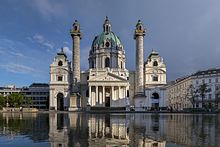
Baroque architecture is a highly decorative and theatrical style which appeared in Italy in the early 17th century and gradually spread across Europe. It was originally introduced by the Catholic Church, particularly by the Jesuits, as a means to combat the Reformation and the Protestant church with a new architecture that inspired surprise and awe. It reached its peak in the High Baroque (1625–1675), when it was used in churches and palaces in Italy, Spain, Portugal, France, Bavaria and Austria. In the Late Baroque period (1675–1750), it reached as far as Russia, the Ottoman Empire and the Spanish and Portuguese colonies in Latin America. In about 1730, an even more elaborately decorative variant called Rococo appeared and flourished in Central Europe.
The year 1764 in architecture involved some significant events.
The year 1757 in architecture involved some significant events.
The year 1806 in architecture involved some significant events.
The year 1774 in architecture involved some significant events.

Hirschholm Palace, also known as Hørsholm Palace, was a royal palace located in present-day Hørsholm municipality just north of Copenhagen, Denmark. It was rebuilt in the Baroque style in the 1740s and, one of the finest buildings of its time, it became known as the "Versailles of the North".
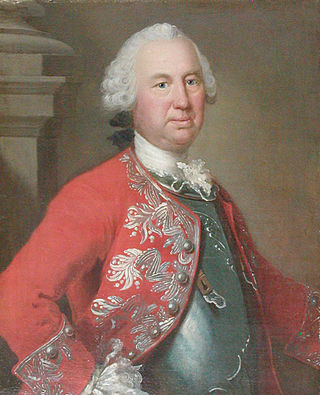
Laurids Lauridsen de Thurah, known as Lauritz de Thurah, was a Danish architect and architectural writer. He became the most important Danish architect of the late baroque period. As an architectural writer and historian he made a vital contribution to the understanding of both Denmark's architectural heritage and building construction in his day.
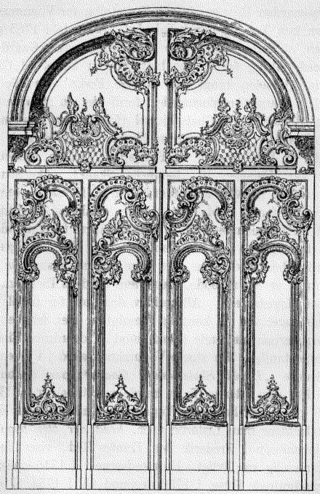
Nicolai Eigtved, also known as Niels Eigtved, was a Danish architect. He introduced and was the leading proponent of the French rococo or late baroque style in Danish architecture during the 1730s–1740s. He designed and built some of the most prominent buildings of his time, a number of which still stand to this day. He also played an important role in the establishment of the Royal Danish Academy of Art, and was its first native-born leader.

Nicolas-Henri Jardin was a French architect. Born in St. Germain des Noyers, Seine-et-Marne, Jardin worked seventeen years in Denmark–Norway as an architect to the Danish royal court. He introduced neoclassicism to Denmark–Norway.
The year 1706 in architecture involved some significant events.
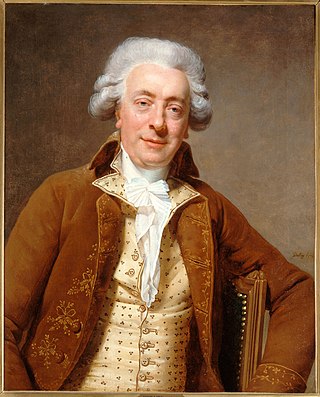
Claude-Nicolas Ledoux was one of the earliest exponents of French Neoclassical architecture. He used his knowledge of architectural theory to design not only domestic architecture but also town planning; as a consequence of his visionary plan for the Ideal City of Chaux, he became known as a utopian. His greatest works were funded by the French monarchy and came to be perceived as symbols of the Ancien Régime rather than Utopia. The French Revolution hampered his career; much of his work was destroyed in the nineteenth century. In 1804, he published a collection of his designs under the title L'Architecture considérée sous le rapport de l'art, des mœurs et de la législation. In this book he took the opportunity of revising his earlier designs, making them more rigorously neoclassical and up to date. This revision has distorted an accurate assessment of his role in the evolution of Neoclassical architecture. His most ambitious work was the uncompleted Royal Saltworks at Arc-et-Senans, an idealistic and visionary town showing many examples of architecture parlante. Conversely his works and commissions also included the more mundane and everyday architecture such as approximately sixty elaborate tollgates around Paris in the Wall of the General Tax Farm.
The year 1779 in architecture involved some significant events.
The year 1742 in architecture involved some significant events.
The year 1760 in architecture involved some significant events.
The year 1755 in architecture involved some significant events.
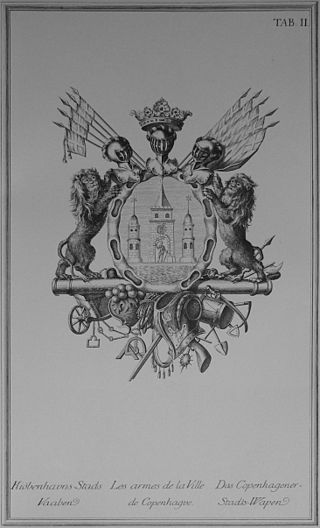
Den Danske Vitruvius is a richly illustrated 18th-century architectural work on Danish monumental buildings of the period, written by the Danish Baroque architect Lauritz de Thurah. It was commissioned by Christian VI in 1735 and published in two volumes between 1746 and 1749. The title refers to the Roman architect and engineer Vitruvius, who published De architectura in the 1st century AD, an authoritative treatise on the architecture of the time. The direct inspiration for de Thurah's Den Danske Vitruvius was Colen Campbell's Vitruvius Britannicus.

Hafnia Hodierna, Eller Udførlig Beskrivelse om den Kongelige Residentz- og Hoved-Stad Kiøbenhavn is an engraved architectural work on Copenhagen, published by the Danish architect Lauritz de Thurah in 1748. Profusely illustrated throughout, it is a valuable source of knowledge as to the appearance of Copenhagen in the middle of the 18th century. It complements, with some overlap, de Thurah's other major work Den Danske Vitruvius, which focuses primarily on surrounding areas, as well as the rest of Denmark.
The year 1744 in architecture involved some significant events.
